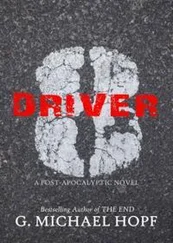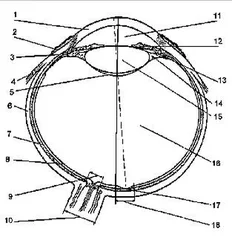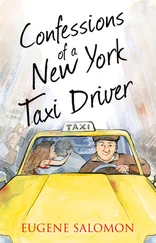State of New Jersey Motor Vehicle Commission - Driver Manual
Здесь есть возможность читать онлайн «State of New Jersey Motor Vehicle Commission - Driver Manual» весь текст электронной книги совершенно бесплатно (целиком полную версию без сокращений). В некоторых случаях можно слушать аудио, скачать через торрент в формате fb2 и присутствует краткое содержание. Жанр: sci_state, Юриспруденция, sci_transport, на английском языке. Описание произведения, (предисловие) а так же отзывы посетителей доступны на портале библиотеки ЛибКат.
- Название:Driver Manual
- Автор:
- Жанр:
- Год:неизвестен
- ISBN:нет данных
- Рейтинг книги:4 / 5. Голосов: 1
-
Избранное:Добавить в избранное
- Отзывы:
-
Ваша оценка:
- 80
- 1
- 2
- 3
- 4
- 5
Driver Manual: краткое содержание, описание и аннотация
Предлагаем к чтению аннотацию, описание, краткое содержание или предисловие (зависит от того, что написал сам автор книги «Driver Manual»). Если вы не нашли необходимую информацию о книге — напишите в комментариях, мы постараемся отыскать её.
Driver Manual — читать онлайн бесплатно полную книгу (весь текст) целиком
Ниже представлен текст книги, разбитый по страницам. Система сохранения места последней прочитанной страницы, позволяет с удобством читать онлайн бесплатно книгу «Driver Manual», без необходимости каждый раз заново искать на чём Вы остановились. Поставьте закладку, и сможете в любой момент перейти на страницу, на которой закончили чтение.
Интервал:
Закладка:
* If you miss an exit, go on to the next one.
* Never back up on an exit ramp or deceleration lane.
Special highway, parkway and turnpike conditions
Weave Lane
A weave lane is both an entrance and an exit for an expressway. Traffic may come onto and leave the expressway at the same location. This traffic weave causes conflicts, both for motorists using a weave lane and those on the expressway and entrance ramp (in terms of speed and space adjustments). The motorist entering from the entrance ramp must yield the right-of-way to the motorist leaving the expressway.
Highways Through Cities
The volume of traffic may increase dramatically. Speeds may slow to a crawl.
A motorist should drive in the left or center lane to avoid merge conflicts during rush hour. A motorist should search for exits early and adjust position for exit.
Disabled Vehicles
When seeing a disabled vehicle ahead, a motorist should reduce speed and increase the space between his/her vehicle and the disabled vehicle. This may involve changing lanes. Be alert for pedestrians, tow trucks and/or police vehicles.
If a motorist’s vehicle becomes disabled, he/she must:
* Pull off as far as possible onto the shoulder or median.
* Turn on emergency flashers.
* Raise the hood to signal for assistance.
* Stay in the vehicle and lock the doors.
* Ask anyone who stops to go to a phone and call for assistance.
* Not get into a stranger’s vehicle.
Construction Areas
A motorist should always stay alert for construction-area warning signs. When coming across these areas, a motorist should adjust speed and adjust position to maintain space around his/her vehicle.
Toll Booths
A motorist should stay alert for toll booth signs and begin reducing speed early, as traffic may be backed up at the booth. Green lights or signals will highlight open booths. A motorist should be aware of EZ Pass booths and lanes, including high-speed EZ Pass lanes. When exiting toll booths, a motorist should search traffic to both sides for merging potential, accelerate smoothly and adjust speed.
Curves
It is important for a motorist to adjust steering and speed when approaching a curve in the road because vehicles tend to keep going straight. The best way to enter a curve is to slow down before entering and avoid drifting into another lane. A motorist should always watch for vehicles that may drift into his/her lane as well. Check for Curve Ahead warning signs and recommended speeds.
Interchanges
Divided roadways are built for express traffic. To ease traffic flow, there are usually no traffic lights or direct intersections. To enter or exit such an expressway,
a cloverleaf turn is often necessary. A motorist should watch for entrance and exit signs and drive slowly in the circle, obeying the posted speed limit.
Turning regulations
Right Turn On Red
Unless a No Turn on Red sign is posted, New Jersey law authorizes a right turn on a red light after a motorist comes to a full stop and checks for traffic. A motorist must yield to all oncoming traffic and pedestrians before turning right at a red light. Difficult-to-see vehicles, such as bicycles and mopeds, may have a green light, so it is important for a motorist to be aware of their presence. (N.J.S.A. 39:4-115) Always use a proper turn signal at least 100 feet before making any turn, and cancel the signal after completing the turn. (N.J.S.A. 39:4-126)
Right Turns (N.J.S.A. 39:4-123)
To make a safe right turn, a motorist should approach the intersection as far to the right as possible, keeping near to the curb or parked vehicles. The motorist should not swing outward or into another lane while making the right turn. He/she should drive up to the turn as far to the right as possible, keeping close to the right curb or parked vehicles at the curb. This vehicle positioning prior to a right turn reduces the chance of another vehicle being in the space on the right as the motorist makes the turn. He/she should not swing into the wrong lane while making the turn.
Slow down/do not cross dividing line
Left Turns (N.J.S.A. 39:4-123)
Left turns, two vehicles: When two vehicles meet at an intersection and both have signaled to turn left, extra caution must be applied. When safe, each motorist should turn to the left of the center of the intersection.
Left turn from a one-way road on to a one-way road: Approaching the turn in the left lane, the motorist should turn into the left lane of the road he/she
is entering.
Left turn from a two-way road onto a two-way road: Approach the turn as close as possible to the line nearest to the center of the road. When turning, the vehicle should not cross lane markings. The motorist should keep to the right of the center line of the road that the vehicle is entering.
Yield oncoming traffice/Use turn signals/don’t cut corners!
Left turns, between intersections: Between intersections, solid lines show when not to pass. However, these lines may be crossed with care when entering or leaving driveways in business or residential areas.
Left turn from a two-way road onto a four-lane highway: Approach the turn as close to the center line of the right side of the road as possible. Make the turn before reaching the center of the intersection.
It is important not to cross lane markings. The motorist should turn into the lane nearest the center line of the right side of the other road. This is the passing lane of the four-lane highway. When traffic permits, the motorist should move to the right, out of the passing lane.
Yield oncoming traffice/Use turn signals/don’t turn wide!
Stopping regulations
Signs, signals and traffic rules indicate when a motorist must stop. A motorist should never try to beat a traffic light change. A motorist must be careful even if the light is changing to green (fresh green light). There may be other vehicles coming through or still in the intersection. Most accidents at traffic signals happen in the first few seconds after the light has changed. When a yellow light follows a green light, a motorist must stop before entering the intersection, unless yellow appears when the vehicle is too close to stop safely. If the light changes while a driver is already in the intersection, he/she should go through with caution. Be alert for a stale green light; this is a light that has been green for some time.
Be prepared for it to change to yellow and then red. Slow down and stop accordingly.
A motorist must stop:
* At an intersection with a stop sign
* At an intersection with a red light either flashing or illuminated
* At an intersection with a yellow light after a green, unless too close to stop safely
* When a traffic officer orders the vehicle to stop
* When there is a yield sign, and traffic does not permit a safe merge
* When a school bus is picking up or letting off children and/or the red lights are flashing
* When coming from an alley, private driveway or building
* At a bridge span that is about to open for boat traffic
* For a blind pedestrian using a white or metallic walking cane, or a trained guide dog, or a guide dog instructor engaged in instructing a guide dog
* For a pedestrian in a crosswalk or at an intersection
* For a motorized wheelchair or mobility-assistance device in a crosswalk or at an intersection
Single white stop lines show motorists where to stop at stop signs or traffic signals.
Stop at Railroad Crossings
To ensure public safety, the New Jersey Department of Transportation (NJDOT) and railroad companies mark public highway railroad crossings with one or more warning devices. Warning devices include advance warning signs, pavement markings in front of a railroad crossing, flashing lights (usually on railroad crossing signs), gates or gates with flashing lights, bells and flag signals.
Читать дальшеИнтервал:
Закладка:
Похожие книги на «Driver Manual»
Представляем Вашему вниманию похожие книги на «Driver Manual» списком для выбора. Мы отобрали схожую по названию и смыслу литературу в надежде предоставить читателям больше вариантов отыскать новые, интересные, ещё непрочитанные произведения.
Обсуждение, отзывы о книге «Driver Manual» и просто собственные мнения читателей. Оставьте ваши комментарии, напишите, что Вы думаете о произведении, его смысле или главных героях. Укажите что конкретно понравилось, а что нет, и почему Вы так считаете.









![Nicholas Timmins - The Five Giants [New Edition] - A Biography of the Welfare State](/books/701739/nicholas-timmins-the-five-giants-new-edition-a-thumb.webp)

